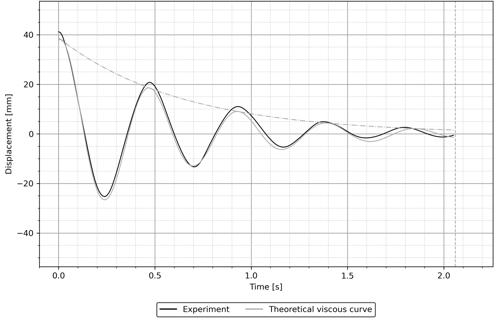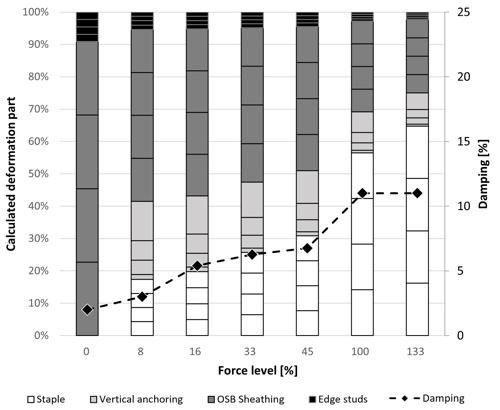Damping of timber constructions in earthquake situation: materials, connections and structures
- Degree programme: Master of Science in Wood Technology
- Author: Kylian Jean-Maurice Maître
- Thesis advisors: Prof. Martin Geiser, Dr. Pierino Lestuzzi
- Expert: Dr. Thomas Catterou
- Year: 2024
Vibration damping is a complex physical phenomenon involving the dissipation of energy and is an essential dynamic property to quantify the serviceability in wind conditions and resistance of structures to earthquakes. According to the studied literature and the obtained results, it is consistent to revise upwards the equivalent viscous damping coefficient currently set at 5% in the standards, according to the type of structure and the contribution of non-structural elements
Initial situation Vibration damping is a complex physical phenomenon involving the dissipation of energy and is an essential dynamic property for ensuring the wind serviceability and earthquake resistance of structures.
Objectives The aim of this thesis is to determine whether viscous damping coefficients greater than the 5% set of standards are feasible for timber structures.
Materials and methods 798 free vibration tests were evaluated. The first tests used the following materials: steel, solid wood, plywood panel, OSB panel. Then, other tests involve the following connections on sections of wood and OSB or gypsum boards: dowel, staple, nail, screw. Finally, various timber structures are tested: log building, nailed or stapled timber frames, CLT panels. The data collected is based of harmonic oscillators released and evaluatad by curve fitting. These tests are repeated at different force levels, corresponding to a percentage of the design force used.
Results and discussion First, wood materials show higher damping than steel. Then, as with the connector pressing force, the lowest damping values correspond to dowels that do not press the assembly at all, then staples, then nails and finally screws. Secondly, timber-framed structures can reach a damping of more than 15% for large deformations, with an increase in damping for the nailed frame compared with the stapled frame. For CLT structures, which are less susceptible to interfacial friction because of their design, the damping values remain lower, under 11%. As for log construction, its damping depends directly on its own vertical loads, leading to very high values (> 60%) for heavy slate roofs.
Conclusion Most of this energy dissipation comes from the connections, which generate interfacial friction. The affinity between the deformation parts of structural elements and their contribution to structural damping has been demonstrated. To design a reliable model for calculating total structural damping, it is still necessary to check separately the influence of the coefficient of friction for interfacial friction, the geometry and arrangement of connectors, the number of connectors, the connector pressing force, the force level, the dynamic and non-linear stiffness of elements and the natural period of the system. Furthermore, damping in timber structures during an earthquake remains a critical factor influencing their dynamic response. Finally, according to the studied literature and the obtained results, it is consistent to revise upwards the equivalent viscous damping coefficient currently set at 5% in the standards, according to the type of structure and the contribution of non-structural elements.

